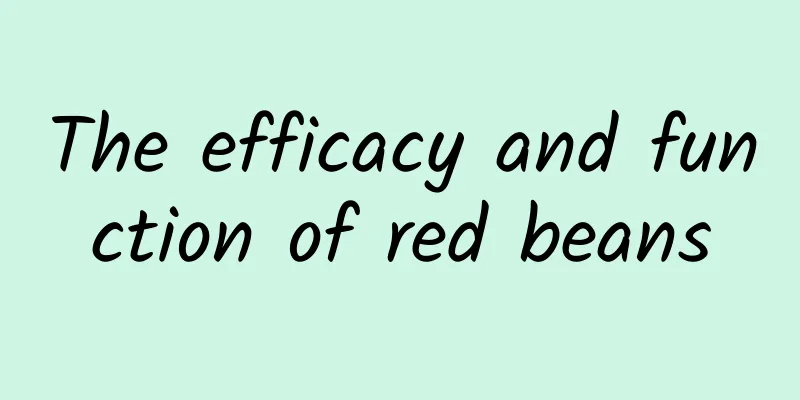Tips on grafting loofah and pepper

|
Have you ever seen the combination of loofah and pepper? I haven’t seen it either. Loofah can be grafted with pepper. Let me tell you about it below: Interplanting loofahs between the two furrows of wintering peppers in a greenhouse by direct seeding will not affect the growth of the peppers, but will also make full use of the trellises and idle period of the greenhouse to achieve high yields and increased income. 1. Variety selectionAccording to the arrangement of planting time, he finally selected pepper varieties that are more resistant to low temperature and weak light, have a high fruit setting rate, and mature very early. The loofah varieties selected are high-quality, high-yield, and suitable for market demand. 2. Sowing and seedling raisingPeppers are sown in mid-August and transplanted at the end of September. Sponge gourds are sown directly in the two furrows in early November. Pepper seeds are treated by soaking them in 60℃ warm water for 15 minutes. Be sure to stir while pouring hot water, then soak them in 1000 times potassium permanganate for half an hour, remove the seeds and rinse them, then soak them in clean water for 8 to 10 hours, drain the water and sow them. Sponge gourd seeds are soaked in clean water for 8 to 10 hours, and can be sown after draining the water. 3. Planting methodBefore planting peppers, sufficient base fertilizer should be applied, and ridges should be made after deep plowing and fine tillage. A 30 cm wide walkway should be left between two ridges, and the ridges should be covered with mulch. The rows should be planted at a spacing of 40 cm and the plants at a spacing of 30 cm. The planting density of loofah is much smaller. Loofah should be sown only every two ridges, in the middle and front part of the greenhouse, and on the walkways between ridges. The plant spacing is 100 cm, and about 300 plants can be planted in a 600-meter greenhouse. 4. Main field management measures(1) TemperatureAfter transplanting, the daytime temperature should be controlled between 25 and 30°C, and the night temperature should be between 15 and 18°C. After the seedlings have grown, the temperature can be slightly lower by 2°C. (2) Fertilizer and waterAfter applying enough basal fertilizer, no topdressing is needed in the early stage. The first topdressing is after the peppers are harvested, and 10 kg of urea is applied with water. Irrigation is done by dark irrigation under the film; the second topdressing is done one month after the first topdressing. Apply 10 kg of urea per mu with irrigation. Luffa likes moisture and requires a large amount of fertilizer. Apply seedling-growing fertilizer once in the seedling stage and apply quick-acting fertilizer once in the fruit-bearing stage. About 10 kg of urea can be applied per mu. (3) Plant adjustmentFor peppers, if the temperature in the greenhouse is too high and the leaves grow too long and the area of leaves is too large, the dense branches should be thinned out or some plants should be thinned out to improve ventilation and light transmission conditions and increase photosynthetic efficiency. When loofah enters the peak fruiting period, the yellow and old leaves and deformed young fruits should be removed in time to concentrate nutrients and promote the growth of loofah. (4) Pest and disease controlThe main diseases are pepper blight, which can be treated with 2000-2500 times of Fusaid 50% suspension; virus disease can be treated with 500 times of 20% virus a wettable powder or 1000 times of 1.5% plant disease emulsion; gray mold can be treated with 600-800 times of cypermethrin, downy mildew of loofah can be treated with 600-800 times of cypermethrin; vine blight can be treated with 800 times of 50% carbendazim wettable powder or 800 times of 80% mancozeb wettable powder. The main insect pests are aphids, which can be treated with 1500-2000 times of 10% imidacloprid wettable powder, and loofah leaf miners can be treated with 3000 times of 2.5% dimethoate emulsion or 2500 times of 18% avermectin. (5) HarvestingThe first peppers should be harvested early to avoid them falling off the vines, and the fruit should be harvested when the fruit has grown to its maximum and the skin has thickened. The loofah can be harvested when the young melons are moderate in size, the fruit stalks are smooth, and the hairs are reduced. |
<<: Medical effects and functions of loofah
>>: Prevention and control of downy mildew of loofah
Recommend
The effects and benefits of eating cuttlefish regularly
Cuttlefish can nourish the body. Cuttlefish speci...
What are the blueberry brands? How to grow blueberries?
I believe everyone is familiar with blueberries, ...
What is forwardforward.com like? forwardforward.com review and website information
What is forwardforward.com? forwardforward.com is ...
How to eat carambola? Tips on eating carambola
Star fruit is a nutritious fruit with a slightly ...
How to grow gardenias? Tips on growing gardenias
The elegant and generous gardenia is a favorite o...
What is JFE Holdings like? JFE Holdings reviews and website information
What is JFE Holdings? JFE Holdings (Japan Steel En...
What should not be eaten with passion fruit? Passion fruit eating taboos
Passion fruit is the most popular tropical fruit ...
How to remove the shrimp bag and shrimp thread of prawns
Prawns have shrimp pods and shrimp threads. If yo...
Cultivation methods and precautions of stinking begonia
Stinking Begonia is a perennial herb, also called...
The effects and functions of forget-me-not
Forget-me-not is the name of a flower. It can als...
How is Venezuelan Globo TV? Venezuelan Globo TV review and website information
What is Globovision? Globovision is the only oppos...
Effects and side effects of Guizhou Rosa roxburghii
Guizhou seabuckthorn is a wild fruit unique to th...
What is sweet horn? What are the effects and functions of sweet horn?
Have you ever eaten sweet horns? Do you know what...
The efficacy and function of corn root and how to eat it
Everyone has eaten corn, but do you know about th...
The efficacy and function of cherry root The medicinal value of cherry root
Cherry is a fruit that everyone has seen and eate...









